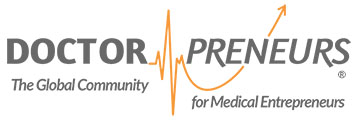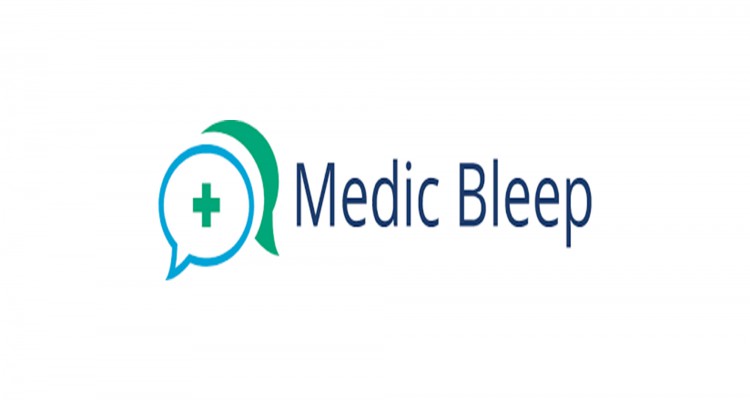 Dr Sandeep Bansal is the founder and CEO of Medic Creations – the company’s core product is Medic Bleep.
Dr Sandeep Bansal is the founder and CEO of Medic Creations – the company’s core product is Medic Bleep.
Though born in the UK, he studied medicine at a private international medical school in India. He then came back to the UK for his medical training in Wales and has since graduated with a PgDip in Paediatrics from Imperial College London. It was during his time as a GP trainee in Oxford that he decided to make the switch from doctor to entrepeneur.
Medic bleep was the result – an Information Governance compliant communication solution to the challenges of synchronous communication in healthcare.
Dr Bansal is also an innovation mentor at Royal College of General Practionioners and a member of the teaching faculty at Harvard Medical School.
What drove you down the road of clinical entrepreneurship?
I have always been intrigued by entrepreneurship – to be able to create and push boundaries. It was not necessarily about having a business per se but rather helping push the system along and if that came in the form of a business then so be it. The NHS was set up around 70 years ago. The most important question I ask myself is how do we make sure the NHS is sustainable and able to stand up for itself for the next 70 years? That’s the angle I look at it from.
I had a gap year after my Paediatrics Masters. During this period I helped run a nursing home, which we up-scaled from 200 to 420 beds. It was an amazing experience. I then went into GP training realising that I had a clinical passion for paediatrics, yet at the same time I could not see myself doing clinical medicine for the rest of my life.
Did I think I could be the best clinician in the country? Maybe not, but I knew my sweet spot was in business technology and healthcare transformation. I saw the need for greater efficiencies in a struggling NHS and the only way I could see it being achieved was through technology.
I was unable to do this whilst in GP training so I thought to myself – I’m just going to have to do this myself. I quit training in 2014.
The most important question I ask myself is how do we make sure the NHS is sustainable and able to stand up for itself for the next 70 years?
After leaving clinical medicine, what was the light-bulb moment that led to the creation of Medic Bleep?
I think like anything, it all came from experience. I conducted a survey that went out to 2000 clinicians . The questions essentially centred on the use of WhatsApp in sharing patient data – 75% of clinicians reported that they do.
Then during an orthopaedic rotation I was asked to share an X-ray with my consultant at 2am. I believed the patient needed surgery fairly urgently. However, my consultant didn’t have access to the technology at home. Essentially, the consultant just needed to see the X-ray to confirm my clinical judgement and give the ‘ok’ to open up the operating theatres. So I took a photo via WhatsApp masking the patient details and that was that.
I think that was the moment. It made me think of the communication methods we use and whether there was better ways to do what we were doing. My survey highlighted that the majority of clinicians were doing this already in some capacity. I thought I needed to tackle this issue because clearly communication needs to be brought into the 21st century. That’s what got me started on the journey of Medic Bleep.
How will Medic Bleep tangibly improve healthcare and where does its future lie?
We have done a lot of work with West Suffolk Hospital. They are a 400 bed hospital and they used to have approximately 1.8 million internal phone calls into switchboard each year. The percentage that went through switchboard just to find the right number for someone was 23%! This was despite having an online directory of pagers and landlines and printed versions on the wards. That’s 414,000 calls that are more or less unnecessary. And, out of the 730,000 directory pages, 10% were invalid numbers!
If we look at the national level. About 1 billion internal phone calls are made in the NHS. Using the West Suffolk hospital stats roughly 200 million calls are unnecessary, and 32% of calls to clinical areas go unanswered. Extrapolate that out and you see the problem and the inefficiencies.
You need to be able to demonstrate and prove a technology before you implement it. We performed a time and motion study at West Suffolk Hospital. This involved following around doctors and nurses, documenting aspects including: time taken to perform a task, times interrupted in doing a tasks attributed to communication, and so on.
We first analysed the pager and switchboard method and then repeated the study with Medic Bleep. What we identified with Medic Bleep was – 21 minutes saved for every single nurse, every single shift. And, 48 minutes saved for every junior doctor, every single shift. This study has been peer-reviewed and published.
You need to be able to demonstrate and prove a technology before you implement it.
Do you think social media dominance could negatively affect Medic Bleep’s potential in healthcare?
There’s always cons with technology. We are deploying Medic Bleep on ‘bring-your-own’ devices as the NHS can’t justify buying everyone devices. Of course there are cons with that because if you’re using your own phone along with Medic Bleep, you will have WhatsApp, Twitter and any other social media messages. Moreover as a clinician it could appear unprofessional and possibly rude to a patient or relative when using your phone during a consultation. To mitigate that, staff will ideally have their phones on silent mode and Medic Bleep will override it.
Obviously, distractibility is an issue. If you get a Medic Bleep message and you also have a WhatsApp or Twitter notification you will glance. It will distract you for a second and may play on your mind .We are cognisant of this and so we are looking at methods to help with this. The long-term solution may be that trusts have to give devices out.
Notification fatigue is also an issue in the social media age. Technology companies like WhatsApp and Facebook focus on how many more messages are being sent every month. Our remit is not to increase but rather reduce messaging. Initially we saw a spike in messaging. We could see from our analytics that there were lots of groups being created that were not operational or patient-led.
We have very clear-cut standard operating procedures in terms of how to use Medic Bleep. This includes the concept of notification fatigue. We are also building in different ‘urgency levels’ for attention purposes so that Medic Bleep’s sound is very different to everything else.
You wrote an article titled ‘Why is change in the NHS so slow?’ With that in mind, what are the best ways to overcome the barriers to change?
As I touched on in the article, I think there are so many facets to this. I believe it is imperative to give the frontline staff time to engage with the change. Just analysing winter pressures – for every patient discharged, a new patient occupies that bed within one hour and fifteen minutes. That doesn’t give time for the system or staff to breathe. Mental health and stress are big issues with so many people working in the NHS that are not looking after themselves.
If you look at Maslow’s hierarchy of needs – if your basic needs not being fulfilled, how will you engage with change and why would you go above and beyond? Giving staff the time and sorting out the workforce issues in the short-term is probably the biggest thing.
Giving staff the time and sorting out the workforce issues in the short-term is probably the biggest thing.
Your career so far has also included teaching at Harvard and Bart’s Medical School and mentoring the Royal College of General Practitioners innovators. What do you think the doctors need to know regarding digital health and technology?
I think it is imperative that technology and innovation comes into curriculums. One way or another clinicians have got to engage with it. Technology will result in innovation and drastic change in the healthcare landscape. The impact that this has on career options is something to consider.
Being at the frontline we are so privileged to be able to identify what needs to be changed and have the scientific insight to know where the value would lie clinically. I see working patterns changing around me with clinicians wanting to do their work but also dabble in coding or data analytics. We can utilise our skill sets and thus expand our opportunities.
We can utilise our skill sets and thus expand our opportunities.
How do you spend your time?
Normal stuff really, family and friends. I do enjoy hiking at Brecon Beacons. But family and friends mainly, that is what it’s all about.

